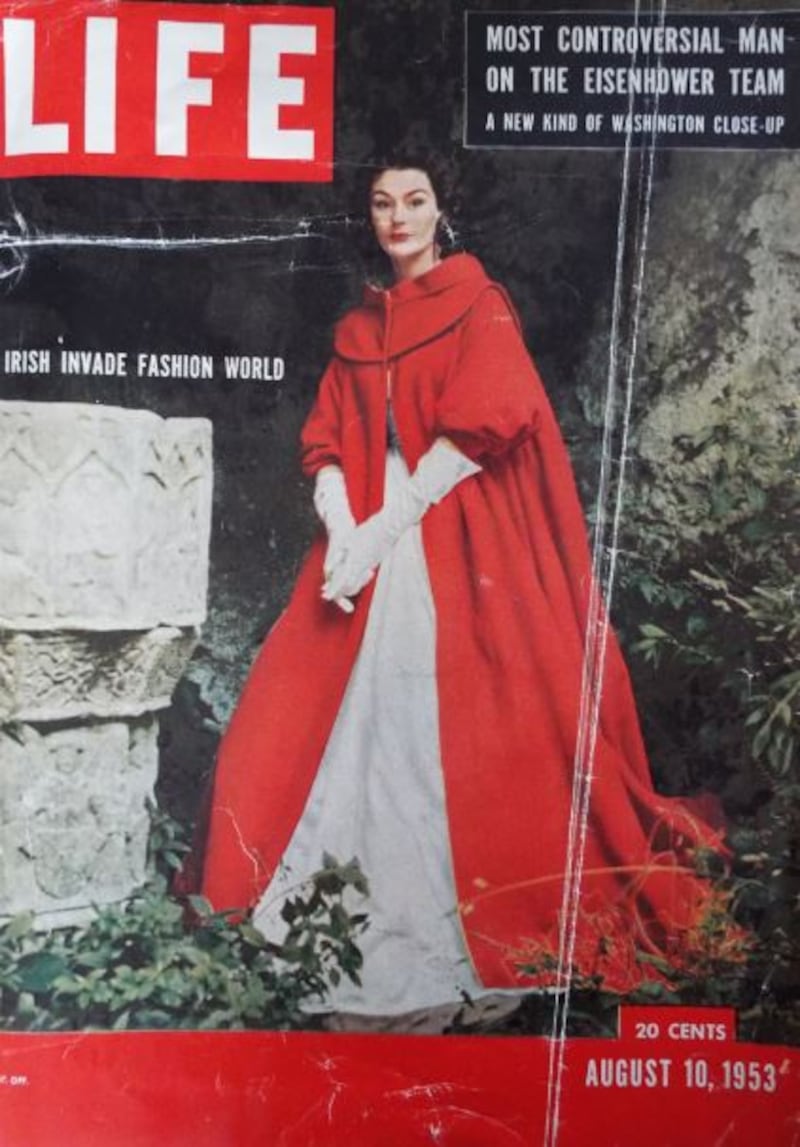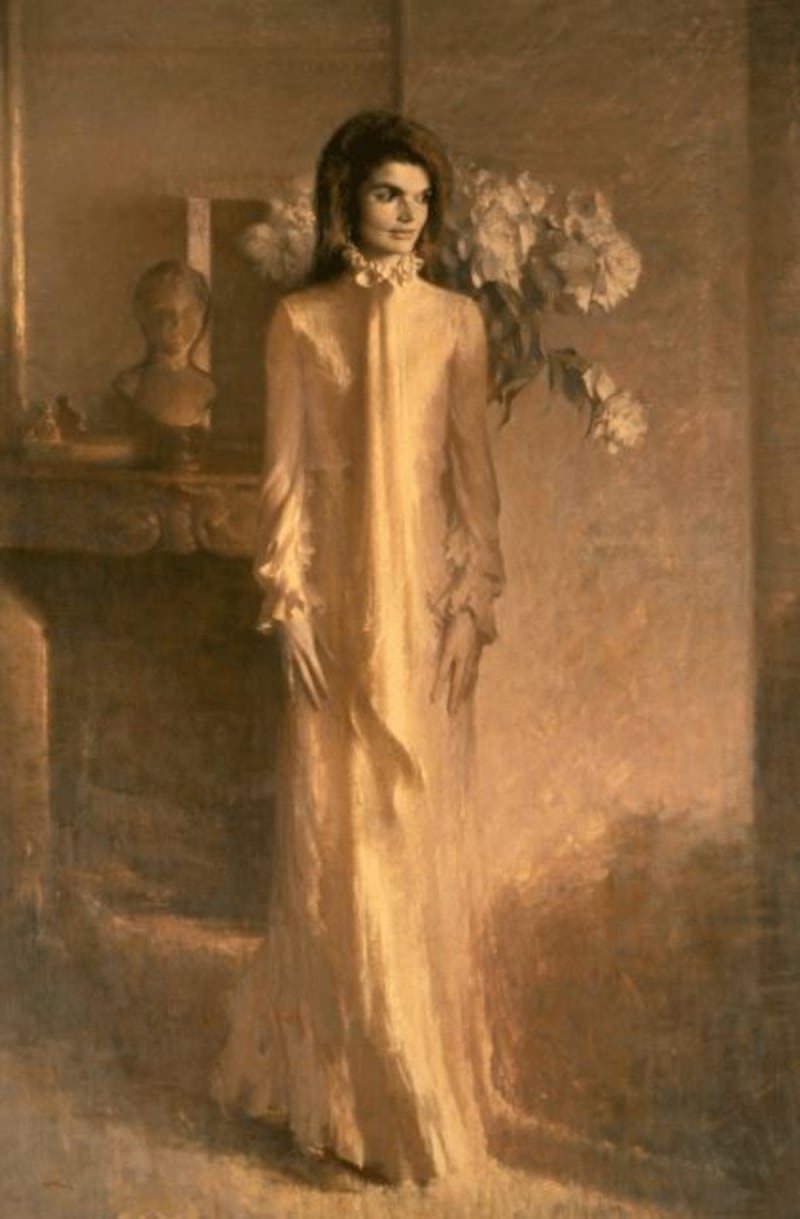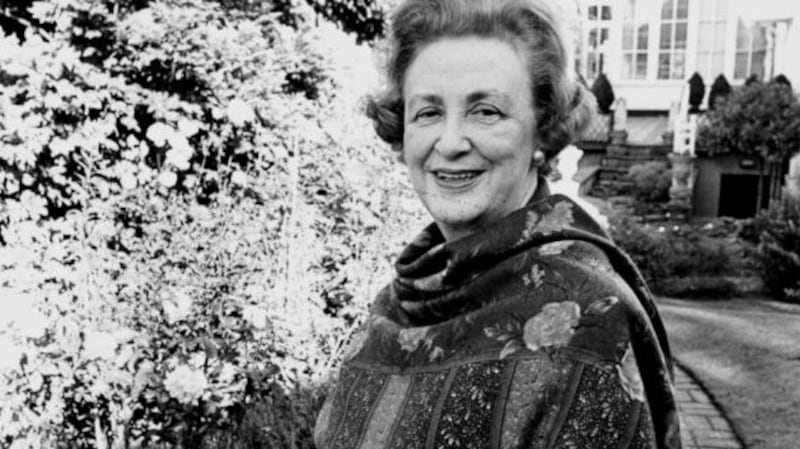Since 1991, March has been designated Irish-American Heritage Month in the United States and the contributions and achievements of Irish immigrants and their descendants are commemorated and celebrated at events across the nation. However, not every Irish person who has helped to shape American culture necessarily lived there and the transnational ties established by our emigrant communities could often be leveraged for economic advantage.
One individual who benefitted from these networks was the renowned fashion designer, Sybil Connolly. Born in Wales to an Irish father, she spent her formative years there before moving to Waterford following his death in 1936. From an early age she showed a keen interest in fashion so she was allowed to leave school at the age of 17 and move to London, where she began an apprenticeship as a dressmaker at Bradley's, a prestigious Irish firm who counted the widowed Queen Mary among their clients. The young Irish girl would often attend royal fittings at Buckingham Palace where she remarked her role was chiefly to "hold the pins".
The outbreak of the second World War saw Connolly return to Ireland once again where she secured a role as a buyer with the Richard Alan fashion house. She later took on the role of manager and, following the departure of Gaston Mallet, the company's chief designer in 1952, soon filled that vacancy.
Connolly was determined to keep up with the latest international trends but to add a distinctly Irish twist to her designs. Irish fabrics were incorporated wherever possible and Donegal tweed, báinín, a traditional undyed cream-coloured Irish wool and Carrickmacross lace all featured heavily.

She owed her big break to her relationship with the Irish-born editor of Harper's Bazaar, Carmel Snow. Snow led a delegation of American fashion designers and department store buyers on a visit to Ireland in 1953 where they had the opportunity to view an exhibition of Connolly's work at Dunsany Castle. A few months later a full-length red Kinsale cape and white crochet evening dress she designed appeared on the cover of Life magazine under the title "Irish invade fashion world" and Connolly became a well-known name among the elite of American high society.
She would soon after launch her own label and her work would appear in Time, Harper's Bazaar and Vogue. She would count Hollywood stars like Merle Oberon, Rosalind Russell, Elizabeth Taylor, and Julie Andrews among her clientele alongside several members of the wealthy Rockefeller, Mellon, and Dupont families. Her talent for self-promotion and her personal business acumen served her well and enabled her to open up new markets across the United States, Canada and even Australia. Stores that had never stocked the work of Irish designers previously were soon selling her work.

At the peak of her success she was earning over $500,000 a year in gross sales and directly employed more than 100 women as weavers and lace-makers during one of the most economically turbulent decades in Irish history. Connolly was able to undercut a number of her continental rivals thanks to the lower wages her Irish workers expected. However, high fashion can often be a fickle mistress and demands for more youthful and contemporary designs saw her sales rapidly decline from the 1960s onwards.
First Lady Jacqueline Kennedy was a fan of Connolly's work and her official portrait, which was unveiled in the East Room of the White House in 1971, depicts her wearing a pleated linen dress made by the Irish designer.
In later life she turned her hand to interior design and homeware, and collaborated with Tipperary Crystal, Tiffany & Co and Brunschwig & Fils among others on a number of projects.
Throughout her lifetime and thereafter Connolly was heralded as the first great Irish designer and the international acclaim her work attracted helped to establish a number of key international markets that her successors would benefit from. In 1960 American Vogue magazine editor Bettina Ballard wrote of her: “Ireland was a completely unexpected center for fashion. We were drawn en masse to Dublin by the personable milk skinned Irish charmer - Sybil Connolly.”

Connolly died in 1998 but an excellent collection of her work can be viewed at the Hunt Museum in Limerick while Tipperary's Swiss Cottage benefited immensely from her contributions to its internal refurbishment during the 1980s. She left her mark on Ireland and a distinctly Irish mark on the global fashion industry.
This Extraordinary Emigrants article was written by Nathan Mannion, senior curator of EPIC The Irish Emigration Museum in Dublin’s Docklands, an interactive museum that tells the story of how the Irish shaped and influenced the world.









